The brain and mind are not the same...
Like explorers venturing into uncharted seas, neuroscience has endeavored to map
the 10s of millions of connections in our brains. Some believe
that the key to unlocking the mysteries of the mind is in mapping these connections and great advancements in connectomics – the field of neuroscience that creates maps –
has produced neural maps of worms, flies, mice, and even parts of the human brain.
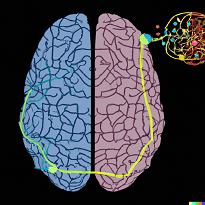 However,
philosophy has, throughout the course of human civilization, proposed that the mind is something
more than the connections in the brain. Something intangible. Something that perhaps cannot be
mapped in the same way. The thoughts, ideas, concepts, sensations, emotions, intuitions, and
imaginations that we conceive of as the mind exist somewhere in a space between. A space that
remains unquantifiable by even the most high-fidelity map of every neuron and every
connection in the human brain. Science, for all its’ ability to explain
complex phenomena, may be unable to explain the intricacies of our minds.
However,
philosophy has, throughout the course of human civilization, proposed that the mind is something
more than the connections in the brain. Something intangible. Something that perhaps cannot be
mapped in the same way. The thoughts, ideas, concepts, sensations, emotions, intuitions, and
imaginations that we conceive of as the mind exist somewhere in a space between. A space that
remains unquantifiable by even the most high-fidelity map of every neuron and every
connection in the human brain. Science, for all its’ ability to explain
complex phenomena, may be unable to explain the intricacies of our minds.
Explorers of a different kind venture inward into the vast oceans of our mind in search of the same elusive questions that have sparked curiosity for millennia.
Unpacking the black box...
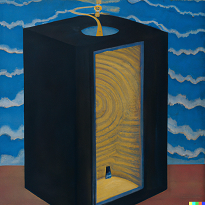 The contents of the mind have been referred to as a “black box” of the unknown.
First conceptualized by American psychologist and behavioralist B.F. Skinner,
the box describes that which traditional behavioralists believe to be unobservable.
Skinner believed that what we perceive of as free will is actually an illusion created
by repeated reinforcement of responses to stimulus. To behavioralists like Skinner,
the mind exists as a black box – we know how it functions and can alter the outputs
(response) by altering the inputs (stimulus). Others argue that this is not the entire story.
That consciousness is more nuanced, and that the black box can be opened. Free will is deeper
than stimulus and response, and that the perception of having free will is enough to confirm
its existence. Opening Skinner’s “black box” requires reviewing all the contents between stimulus
and response to reconstruct the oneness of the mind.
The contents of the mind have been referred to as a “black box” of the unknown.
First conceptualized by American psychologist and behavioralist B.F. Skinner,
the box describes that which traditional behavioralists believe to be unobservable.
Skinner believed that what we perceive of as free will is actually an illusion created
by repeated reinforcement of responses to stimulus. To behavioralists like Skinner,
the mind exists as a black box – we know how it functions and can alter the outputs
(response) by altering the inputs (stimulus). Others argue that this is not the entire story.
That consciousness is more nuanced, and that the black box can be opened. Free will is deeper
than stimulus and response, and that the perception of having free will is enough to confirm
its existence. Opening Skinner’s “black box” requires reviewing all the contents between stimulus
and response to reconstruct the oneness of the mind.
We have mastered our understanding and organization of the external world through science, however, we have yet to master to the same degree our understanding and organization of the experience of the internal world through philosophy.
The
Continents of the Mind
Annika Anderson, Luke Chamberlain,
Randi Selvey
Based on the work of Dr. Logan Edwards, UW-Whitewater
Much like early attempts by explorers to chart previously unexplored lands, this map is rudimentary
and far from complete.
A first blurry-eyed sketch with eyes not yet fully opened...
Body
 We begin our journey through the continents at the mental conception of the body.
Mahatma Gandhi, known for his philosophies of non-violence, viewed the physical
body as a representation of violence, and that the presence of the body prevented humans
from practicing perfect non-violence. Gandhi was concerned with the idea of absolute
violence, or the injuring or killing of another living being. The requirements to
maintain the human body (food, water, shelter being the foundation of Maslow’s
hierarchy of needs) made violence, in Gandhi’s eyes, unavoidable.
The body continent is divided into four regions the empirical, the anatomical,
the experiential,
and the instinctual conceptions of the body.
We begin our journey through the continents at the mental conception of the body.
Mahatma Gandhi, known for his philosophies of non-violence, viewed the physical
body as a representation of violence, and that the presence of the body prevented humans
from practicing perfect non-violence. Gandhi was concerned with the idea of absolute
violence, or the injuring or killing of another living being. The requirements to
maintain the human body (food, water, shelter being the foundation of Maslow’s
hierarchy of needs) made violence, in Gandhi’s eyes, unavoidable.
The body continent is divided into four regions the empirical, the anatomical,
the experiential,
and the instinctual conceptions of the body.
Conscious Mind
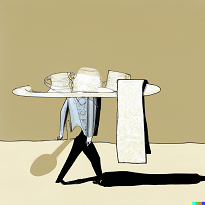 Jean Paul Sartre, in his 1943 text Being and Nothingness, built upon Descartes’ ideas.
Consciousness
(or being) can be thought of as consisting of two types: being-in-itself (left) and
being-for-itself
(right). Being-in-itself concerns the being – or existence - of objects. In Sartre’s
mind,
this type of being was not the place of humans but rather objects. A person working as a server is
not
primarily a server (being-in-itself), rather a person is primarily a person
(being-for-itself) who
just
happens to be performing the function of a server.
Jean Paul Sartre, in his 1943 text Being and Nothingness, built upon Descartes’ ideas.
Consciousness
(or being) can be thought of as consisting of two types: being-in-itself (left) and
being-for-itself
(right). Being-in-itself concerns the being – or existence - of objects. In Sartre’s
mind,
this type of being was not the place of humans but rather objects. A person working as a server is
not
primarily a server (being-in-itself), rather a person is primarily a person
(being-for-itself) who
just
happens to be performing the function of a server.
Another way to think of being-for-itself is the idea of you as a person. Sartre said that to act in good faith, an individual must be aware of their own consciousness through self-reflection. They must not only be aware of themself, but also aware of their own self-reflection.
Subjectivity
 How can two people have radically different experiences of the same event?
Two people walking together as a rainstorm starts have wildly different reactions – one
depressed, while the other elated. Subjectivity is the idea that one objective reality
(a rainstorm) can produce multiple interpretations due to differences in perception,
mood, feelings, abilities, creativity, language etc. gathered from previous experience.
How can two people have radically different experiences of the same event?
Two people walking together as a rainstorm starts have wildly different reactions – one
depressed, while the other elated. Subjectivity is the idea that one objective reality
(a rainstorm) can produce multiple interpretations due to differences in perception,
mood, feelings, abilities, creativity, language etc. gathered from previous experience.
The subjectivity of the self can be conceptualized as "me as a person" and "I as myself". In Buddhism, the self is thought of as only an illusion to be deconstructed. Paradoxically, the nature of the self can only be known through the “inquiring spirit” that seeks to doubt and negate the self.
As Danish philosopher Soren Kierkegaard famously said; “subjectivity is truth.”
Ego
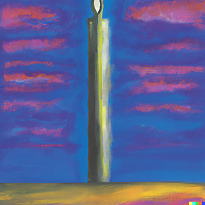 The ego moderates the unrealistic id and the external world to govern how one ought to act in the
world.
The left region of the Ego continent is concerned with the ego for itself, or the selfish
ego.
Sigmund Freud’s pleasure principle, the foundation of psychological egoism, suggests that all
behavior
is motivated by self-interest seeking to maximize pleasure and minimize displeasure. Behaving in
this way,
however, is untenable and must be balanced by the ego within itself, the altruistic ego.
Debate
persists
to whether true altruism is possible if the performer of the act receives a reward in the form of
self-gratification for performing a good deed.
The ego moderates the unrealistic id and the external world to govern how one ought to act in the
world.
The left region of the Ego continent is concerned with the ego for itself, or the selfish
ego.
Sigmund Freud’s pleasure principle, the foundation of psychological egoism, suggests that all
behavior
is motivated by self-interest seeking to maximize pleasure and minimize displeasure. Behaving in
this way,
however, is untenable and must be balanced by the ego within itself, the altruistic ego.
Debate
persists
to whether true altruism is possible if the performer of the act receives a reward in the form of
self-gratification for performing a good deed.
Anti-Ego
Atop Maslow’s hierarchy of needs is the ideal self, self-actualization, or the ideal ego. Only when all other base needs (physiological, safety, love & belongingness, and esteem) have been met, can one be free to pursue one’s unique potential and fulfillment.
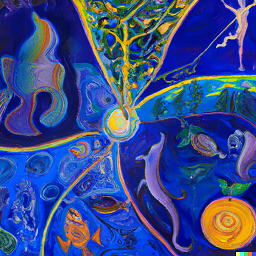 The conscience – Freud’s superego – is the inner voice that tells us when we’ve done
something wrong. It is the foil to the id and is learned from the outside world (parents)
at an early age.
The divine individual is the way in which some western philosophies beginning in ancient Greece
has
conceptualized
the soul. It is something that a person can risk and lose and that, after death, endures as a shade
in the
underworld. By contrast the eternal soul in many eastern philosophies purports that the human
soul is a
part of the soul of God and that we are part of an interconnected collective soul.
The conscience – Freud’s superego – is the inner voice that tells us when we’ve done
something wrong. It is the foil to the id and is learned from the outside world (parents)
at an early age.
The divine individual is the way in which some western philosophies beginning in ancient Greece
has
conceptualized
the soul. It is something that a person can risk and lose and that, after death, endures as a shade
in the
underworld. By contrast the eternal soul in many eastern philosophies purports that the human
soul is a
part of the soul of God and that we are part of an interconnected collective soul.
Others
 The opposite of the self is the other. If the self exists, then the other exists as well.
The environment in which the self exists is the other that is in constant interaction with the self.
Materialism is the idea that all things develop as a product of their environment, and that change
occurs
when contradictions exist in the conditions of the environment (e.g., organisms evolve when there is
a
contradiction between their adaptive characteristics and their environment). The interaction between
the
self and the other can be conceptualized as others in me (right) and me in
others (left).
The opposite of the self is the other. If the self exists, then the other exists as well.
The environment in which the self exists is the other that is in constant interaction with the self.
Materialism is the idea that all things develop as a product of their environment, and that change
occurs
when contradictions exist in the conditions of the environment (e.g., organisms evolve when there is
a
contradiction between their adaptive characteristics and their environment). The interaction between
the
self and the other can be conceptualized as others in me (right) and me in
others (left).
Will
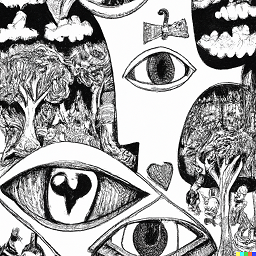 19th century German philosopher Arthur Schopenhauer in his work The World as Will and
Representation
coined the term wille zum leben (the will to life), a force within all of us more powerful
than reason,
logic, or emotion. This is a mindless, aimless impulse that serves as the bedrock for all our
instincts
and the foundation of all life. Schopenhauer presents this as the driving force behind why much of
our social lives are
dictated to such an extent by romance and love.
19th century German philosopher Arthur Schopenhauer in his work The World as Will and
Representation
coined the term wille zum leben (the will to life), a force within all of us more powerful
than reason,
logic, or emotion. This is a mindless, aimless impulse that serves as the bedrock for all our
instincts
and the foundation of all life. Schopenhauer presents this as the driving force behind why much of
our social lives are
dictated to such an extent by romance and love.
The continent is divided into three parts. The collective will exists through social conditioning, norms, etc. and sits below the anti-ego’s will (right) and the ego’s will (left). The anti-ego’s will is dictated by morality, and the ego’s by reality.
Freedom
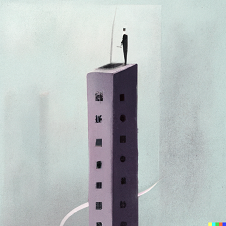 There are two regions in the Freedom continent: authoritative freedom (i.e., freedom of
thought and feeling),
and transformative freedom (i.e., freedom of action and creation). Kierkegaard considers a
man standing
on the edge of a tall building. The man looks over the edge and is overcome by two fears
simultaneously – the fear
of falling, and the fear of having a sudden impulse to jump. The second fear comes from the man
realizing that
he has the complete freedom to choose. Kierkegaard calls this the “dizziness of freedom,” and
suggests that we
experience it whenever we make a moral decision. Rather than becoming overcome by this anxiety, we
can instead
use it to enhance our self-determination and the sense of responsibility and ownership we feel over
the decisions
we make.
There are two regions in the Freedom continent: authoritative freedom (i.e., freedom of
thought and feeling),
and transformative freedom (i.e., freedom of action and creation). Kierkegaard considers a
man standing
on the edge of a tall building. The man looks over the edge and is overcome by two fears
simultaneously – the fear
of falling, and the fear of having a sudden impulse to jump. The second fear comes from the man
realizing that
he has the complete freedom to choose. Kierkegaard calls this the “dizziness of freedom,” and
suggests that we
experience it whenever we make a moral decision. Rather than becoming overcome by this anxiety, we
can instead
use it to enhance our self-determination and the sense of responsibility and ownership we feel over
the decisions
we make.
Unconscious Mind
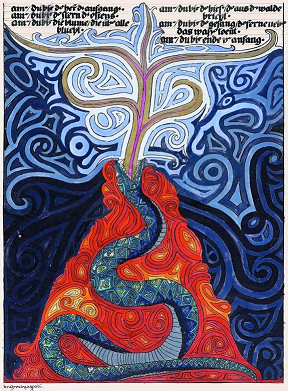 When a smell or an image unexpectedly conjures up an old memory you had thought was long forgotten,
your mind is delving into the unconscious - the place containing the memories and impulses of which
in our day-to-day lives we are unaware. The collective unconscious is a concept introduced
by psychiatrist
Carl Jung that represents a form of the unconscious that is common to all humankind regardless of
culture.
Evidence for the existence of the collective unconscious is observable in people from opposite sides
of the world having dreams of imagery reminiscent of a shared mythology. This, Jung posits, suggests
that these images come from a shared origin in the mind.
When a smell or an image unexpectedly conjures up an old memory you had thought was long forgotten,
your mind is delving into the unconscious - the place containing the memories and impulses of which
in our day-to-day lives we are unaware. The collective unconscious is a concept introduced
by psychiatrist
Carl Jung that represents a form of the unconscious that is common to all humankind regardless of
culture.
Evidence for the existence of the collective unconscious is observable in people from opposite sides
of the world having dreams of imagery reminiscent of a shared mythology. This, Jung posits, suggests
that these images come from a shared origin in the mind.
Sitting above the collective unconscious are the unconscious body (left) and unconscious mind (right). According to Freud, there exists a vast unconscious mind below the conscious mental processes of which we are aware.
Objectivity
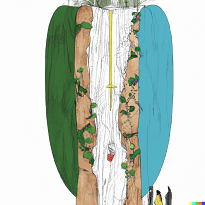 A debate as old as philosophy: nature (right) vs nurture (left). Does our environment make us what
we are (nurture), or
does our genetic blueprint define us (nature)? Nietzsche claims, somewhat paradoxically, that we are
both fated to be
as we are, and that we can create our own realization of ourselves. These seemingly contradictory
notions can be simultaneously
true. Our minds are formed by both the environment in which we are raised, and our genetic code.
A debate as old as philosophy: nature (right) vs nurture (left). Does our environment make us what
we are (nurture), or
does our genetic blueprint define us (nature)? Nietzsche claims, somewhat paradoxically, that we are
both fated to be
as we are, and that we can create our own realization of ourselves. These seemingly contradictory
notions can be simultaneously
true. Our minds are formed by both the environment in which we are raised, and our genetic code.
Consciousness exists, not in one place at one
time but across five planes corresponding to the five
colors on the map.
The Body
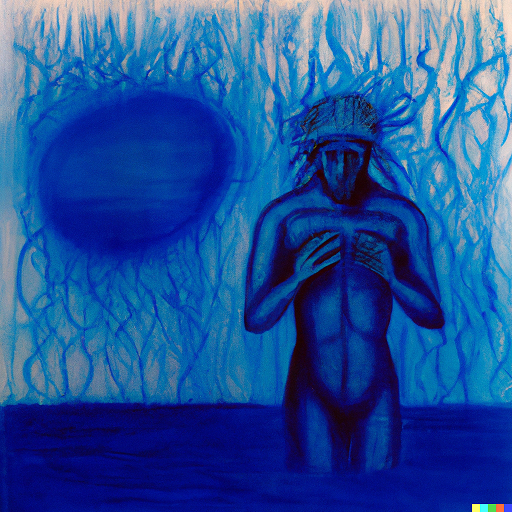
The Brain
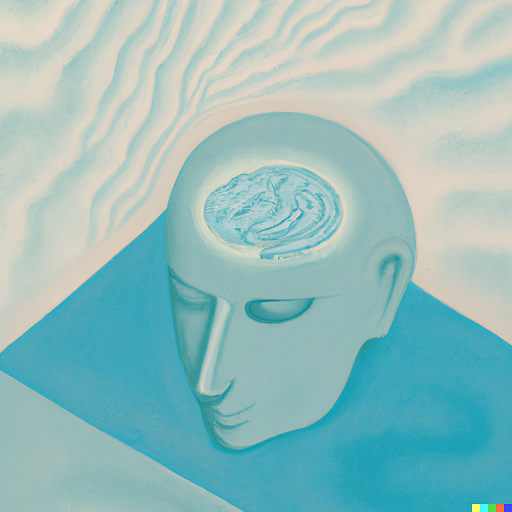
The Mind
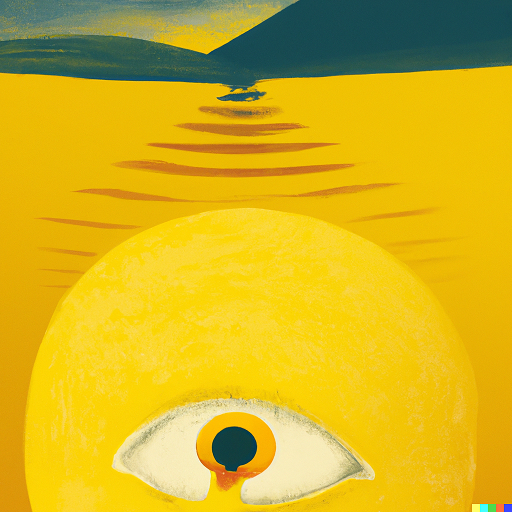
The Heart

The Soul
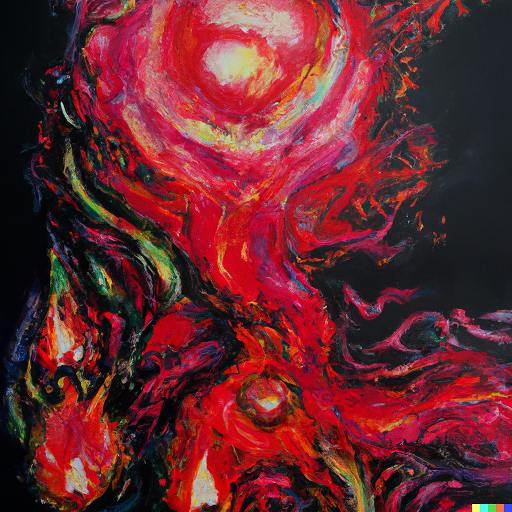
The Right Brain
The idea of brain lateralization – or the notion that different mental processes
are governed by different hemispheres of the brain – has become somewhat controversial.
There is a consensus however, that the right brain is associated with imagination, intuition,
art, and creativity…
The Left Brain
...the left with language, a sense of time, science, and logic…
One is not “left-brained” or “right-brained”...
As the mind wanders through the continents, patterns emerge.
what was first an unknown connection, becomes a well-worn route.
The continents of the mind rest at the conflux of two vast oceans…
Everything
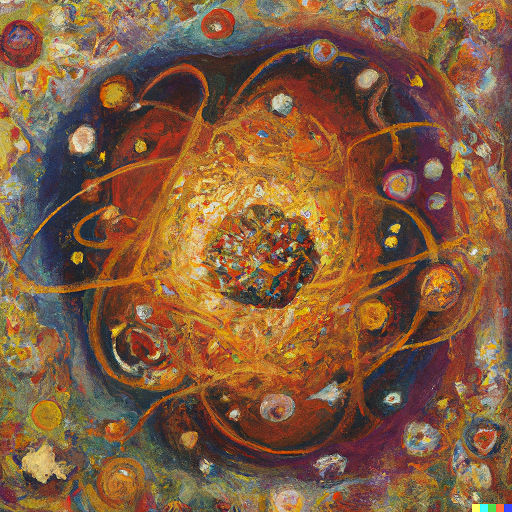
nothingness.
nothingness.
nothingness.
nothingness.
nothingness.
nothingness.
nothingness.
nothingness.
nothingness.
nothingness.
nothingness.
nothingness.
nothingness.
nothingness.
nothingness.
nothingness.